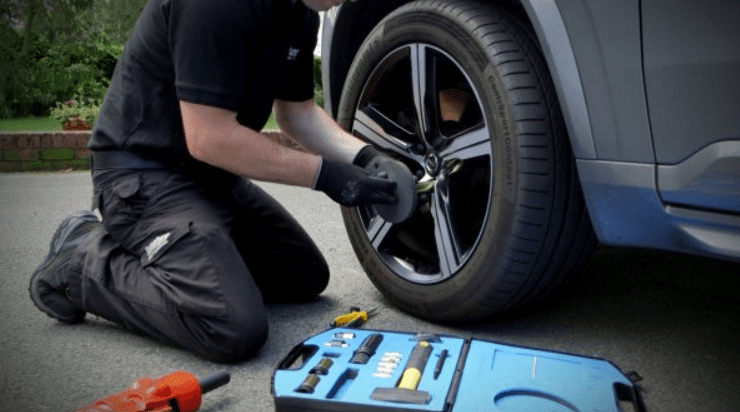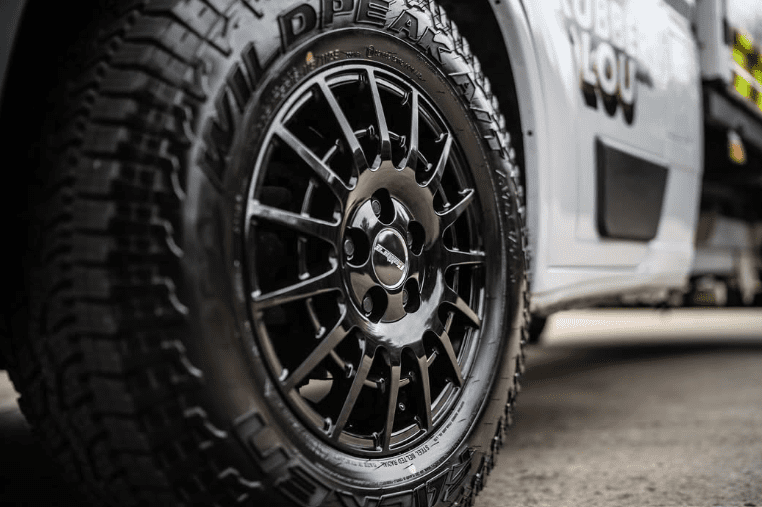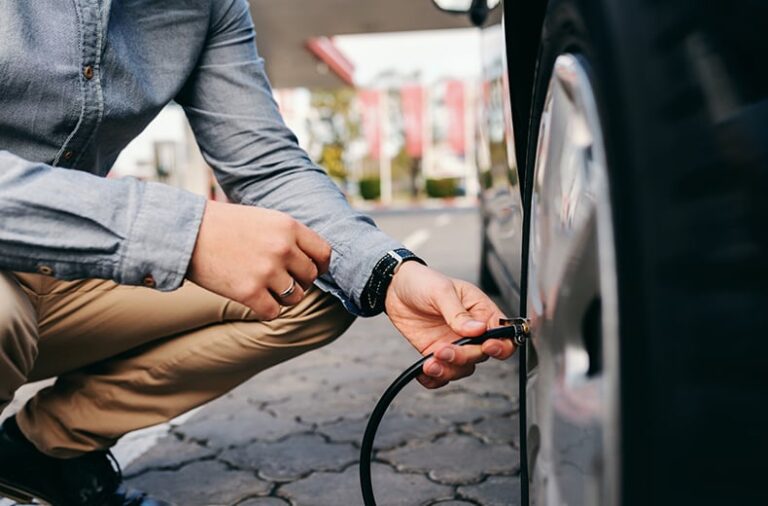As a vehicle owner, it’s crucial to understand the importance of having well-functioning and reliable tyres. A tyre replacement service can help keep your car running smoothly and safely on the road. But, with so many options available, how do you know when it’s time to replace your tyres and where to go for the best tyre replacement service?
In the UK, you must change your tyres when the tread depth falls below the legal limit of 1.6mm. You may also need to replace your tyres if they are damaged and cannot be repaired. For example, your tyre may be ripped by a sharp object or poor driving. Ultimately, replacing your car tyres is important to keep you safe and keep your car performing at its best with optimum handling and control.
How long your tyres will last depends on various things, such as your driving habits, road conditions where you live, types of tyres you use and how well you maintain your tyres. You should check your tyres regularly, especially if they are not driving in the way you expect them to. If they seem different to usual you may need to find a tyre replacement service.
This blog will provide with the ultimate guide to tyre replacement to help you determine whether or not it’s time for a tyre replacement service.
When to Replace Your Tyres
Most vehicle manufacturers recommend replacing your tyres every six years, regardless of tread depth. However, it’s essential to inspect your tyres regularly and replace them sooner if needed. Here are some signs to look for that indicate it’s time for a tyre replacement service:
Tread Wear
Tyres with less than 1.6mm of tread depth are illegal and need to be replaced. You can check your tread depth by using a penny and placing it headfirst into the tread. If you can no longer see the top of the penny, it’s time to replace your tyres.
Tyre Bulges and Cracks
Bulges and cracks in the sides of your tyres are something you should keep an eye on. The growing number of potholes on Britain’s roads means that it’s highly likely that at least one of your tyres could be affected. If you hit a pothole at reasonable speed, it’s possible to pick up impact bulges on the affected tyre.
Slow Punctures
Tell tale signs of a slow puncture include when your car pulls to one particular side while driving. You should also check over your tyres for any foreign bodies stuck into a tyre, such as a nail or screw. Start to check your tyre’s air pressure daily to see whether one goes down quicker than the rest. Some tyres with slow punctures can be repaired but you should get a professional to take a look to check that it’s not serious.
Uneven Wear
If you notice that your tyres are wearing unevenly, it could be a sign of misalignment or a problem with your suspension. You should also check your treads for uneven wear patterns. Sometimes uneven wear can just be a characteristic of the vehicle especially if it uses heavy camber angles for performance handling, but it can also be a sign that your wheel alignment needs adjusting or even a component on your vehicle is worn or damaged. Take your vehicle to a tyre replacement service for an inspection.
Over or Under Inflated Tyres
Poorly inflated tyres can lead to significant tyre damage, reducing their ability to perform safely on all types of roads. Under inflated tyres heighten wear and tear on a tyre, while over inflated tyres lead to premature wear on the middle of a tyre. Both under and over inflated tyres can make the handling of your vehicle more unstable, so if your tyres have been inflated incorrectly you may have to have them replaced.
Cuts or Embedded Objects
For the rear tyres a torch or mirror may be required to see the inside sidewall, for the fronts turn the tyres sharp to the left or right. If there’s a bulge or a blister on the sidewall of a tyre these can lead to failure and could be dangerous, along with the risk of a fine from the authorities. Look out for sharp objects embedded into the tyre such as nails, screws in the sidewall or tread. Cuts can also expose part of the wall which gives the tyre its strength.
Age
As mentioned earlier, tyres should be replaced every six years, regardless of tread depth. Your car log book should have details of when your tyres were last changed, but if you’re unsure take your car to a garage or tyre replacement service and ask them to check for you.
The Benefits of New Tyres
Safety
New tyres are ultimately considerably safer to drive on than old tyres. They increase the ability of your vehicle to stop and turn as well as increasing the connection with the road. This means that overall they are safer.
Better Fuel Efficiency
The condition of your tyres will directly affect how much fuel you use. If you have worn, uneven tyres, your car has to work harder in order to move faster. For best results, your tyres should be inflated to the correct pressure. This will not only protect your rims but it will also ensure that your tyres do not get worn out prematurely.
A Better Driving Experience
Finally, the last benefit of a new set of tires is how they can make you feel. New tires with deeper functioning treads and designs are great for long trips because they provide the driver with a smoother ride. Also, new tires are less noisy when compared to worn out tires. Both of these factors are huge for those who have a long morning commute or frequently take long highway trips. Loud and uncomfortable tires can turn a vacation drive into a nightmare very quickly.
Good Tyre Pressure
It is important to check your pressures regularly and adjust them when carrying heavy loads or taking the family away for an outing. Tyre underinflation can increase your fuel costs, lead to faster wear and can also lead to over deflection of the sidewall which may cause potential failure. New tyres are more likely to have stable tyre pressure.
Where to Find the Best Tyre Replacement Service
When it comes to finding the best tyre replacement service, look for a reputable tyre dealer that offers quality products and professional installation. Here are some factors to consider:
Selection
Look for a tyre dealer that offers a wide selection of tyres from reputable brands. There should be familiar brands available to you such as Bridgestone, Continental, Dunlop, Firestone, Goodyear , Hankook and more.
Installation
Make sure the tyre dealer provides professional tyre installation services, including balancing, rotation, and alignment. Whether you’re getting emergency tyre replacement service or a regular tyre replacement service you should check that all services are being performed for you.
Warranty
Choose a tyre dealer that offers a warranty on their tyres and services. A warranty and/ or guarantee adds to your legal rights if something goes wrong within the first 6 months and gives you the option of a repair or replacement claim.
Price
Compare prices from several tyre dealers to find the best value for your money. A good tyre replacement service will offer a range of high quality tyres and budget tyres to suit your needs.
In conclusion, a tyre replacement service is crucial for the safety and reliability of your vehicle. Keep an eye out for signs that it’s time to replace your tyres, have an emergency tyre replacement plan in place, and choose a reputable tyre dealer for the best tyre replacement service
Need Tyre Replacement in Swindon?
Rubber Lou Tyres offer tyre replacement services and emergency tyre replacement in Swindon and the surrounding areas. We provide a range of specialist tyres to suit your needs including off road tyres and budget tyres. We also specialise in after-hour emergency tyre replacement, punctures and blowouts. Our tyre fitting and tyre replacement services are available 24/7, 365 days a year, so no matter what your tyre issue is, we’ll aim to get you back on the road in no time. Call us now on 0333 40 41 33 for a reliable tyre fitting service or complete our contact form to contact us by email.






